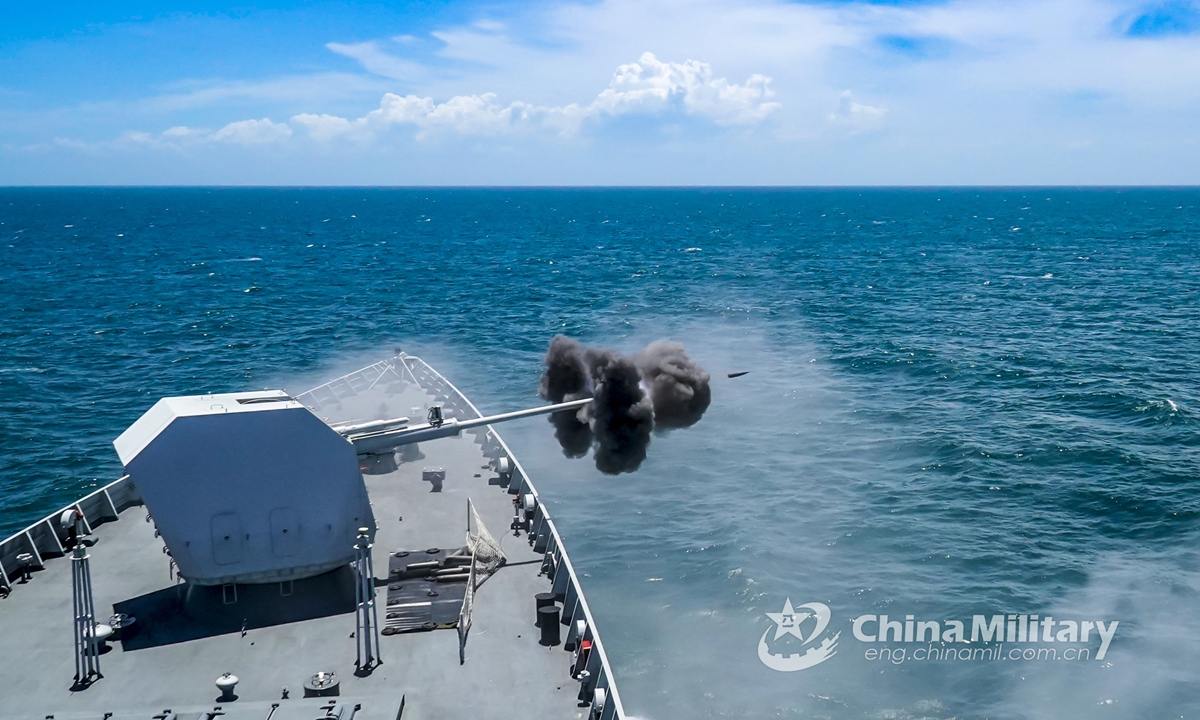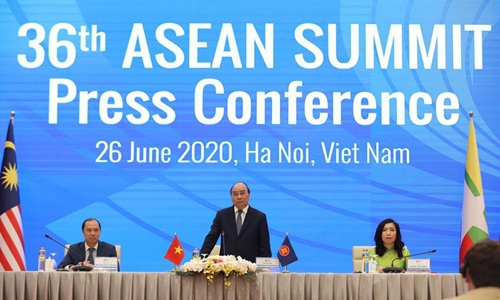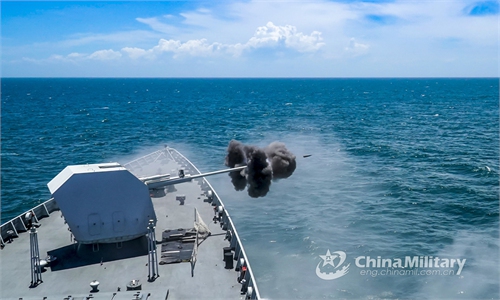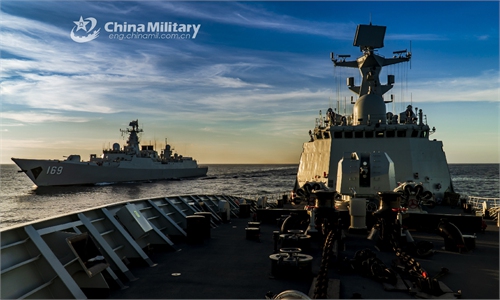
The guided-missile frigate Yulin (Hull 569) attached to a destroyer flotilla with the navy under the PLA Southern Theater Command fires its main-gun against mock ashore targets during a maritime training exercise in waters of the South China Sea in late March, 2020. The guided-missile frigates Xuchang (536) and Yulin (Hull 569) jointly execute maritime tasks on subjects including formation maneuver, live-fire operation, anti-submarine warfare (ASW) operation, joint salvage, etc. Photo:China Military
The USS Ronald Reagan, the USS Nimitz, and their strike groups had held the first dual-carrier drills in the South China Sea (SCS) since 2014.The Ronald Reagan carrier strike group, according to a statement from the US Navy's Seventh Fleet, "is the Navy's only forward-deployed strike group and one of America's most visible symbols of resolve."
I made a prediction at the beginning of 2020, saying this year would be a turning point in the SCS with regional situation turning from "stabilizing and improving" to "turbulence." Given what has been taking place in the area, especially since May, there is concern of more political and security waves.
The US Navy was hit by the COVID-19 pandemic. But this didn't slow down its military operation in the SCS. Instead, it has further intensified its efforts to contain China with the SCS issue.
After threatening to "increase public pressure" on China on May 20 and sending out the Nimitz and Ronald Reagan carrier strike groups for dual-drills in the Philippine Sea in late June, the US said on July 2 that it is concerned about China's military exercises around the Xisha Islands in the SCS. The US has urged "all parties to exercise restraint and not undertake military activities that might aggravate disputes."
In a similar tone, Vietnam and the Philippines on July 2 also denounced China's drills in the waters.
In the meantime, the US hasn't stopped its maritime and aerial monitoring and intelligence operations on China's military exercises. Given that the US has repeatedly conducted so-called freedom of navigation operation in the SCS this year, we can see that the US has been unprecedentedly aggressive and provocative in the region. In fact, these actions are the biggest threat to peace and stability in the SCS - and the US is the largest and most evil backstage manipulator that is militarizing this tranquil region.
The US is a non-claimant country that is further away from the SCS region. Its military presence and interference in the SCS to contain China are certainly coordinated with the regional countries.
In other words, the regional countries are encouraged or pushed by the US to provoke China. Washington is even attempting to manipulate from behind the curtain the negotiations of the Code of Conduct (COC). It has involved itself in a "battle of diplomatic notes" between China and other regional countries by sending a diplomatic communication to the UN Secretary-General's office objecting to China's historic rights in the region. The US has argued China's maritime claims in the SCS are inconsistent with international law.
It is likely that the US has been secretly instigating and publicly supporting countries such as the Philippines, Vietnam, Indonesia and Malaysia to provoke China with reckless unilateral moves.
This being the case, there will be several obvious signals of changes with the SCS regional situation. By taking advantage of the SCS issue, the US has improved its ties with Vietnam and the Philippines. Other claimant countries have grasped that there is an opportunity window in the negotiations of the COC and are using it to consolidate their vested interests with unilateral moves. At the same time, negotiations have stagnated due to the rampant COVID-19 pandemic.
In this context, as a leading force to maintain peace and stability in the SCS, China should spare no effort to advance rules-based maritime order in the region.
These moves may include the construction of facilities on the Nansha Islands and reefs for civilian use. They may also be used to make international public products. They might even be used to integrate marine power with the goal of safeguarding rights and stability in the SCS.
In addition, China should map about potential threats of future maritime warfare scenarios and strengthen its geopolitical advantage in the region so that a Chinese presence ensures a pivot for peace and stability in the SCS.
The author is president of the National Institute for South China Sea Studies and chairman of board of directors of China-Southeast Asia Research Center on the South China Sea. opinion@globaltimes.com.cn



